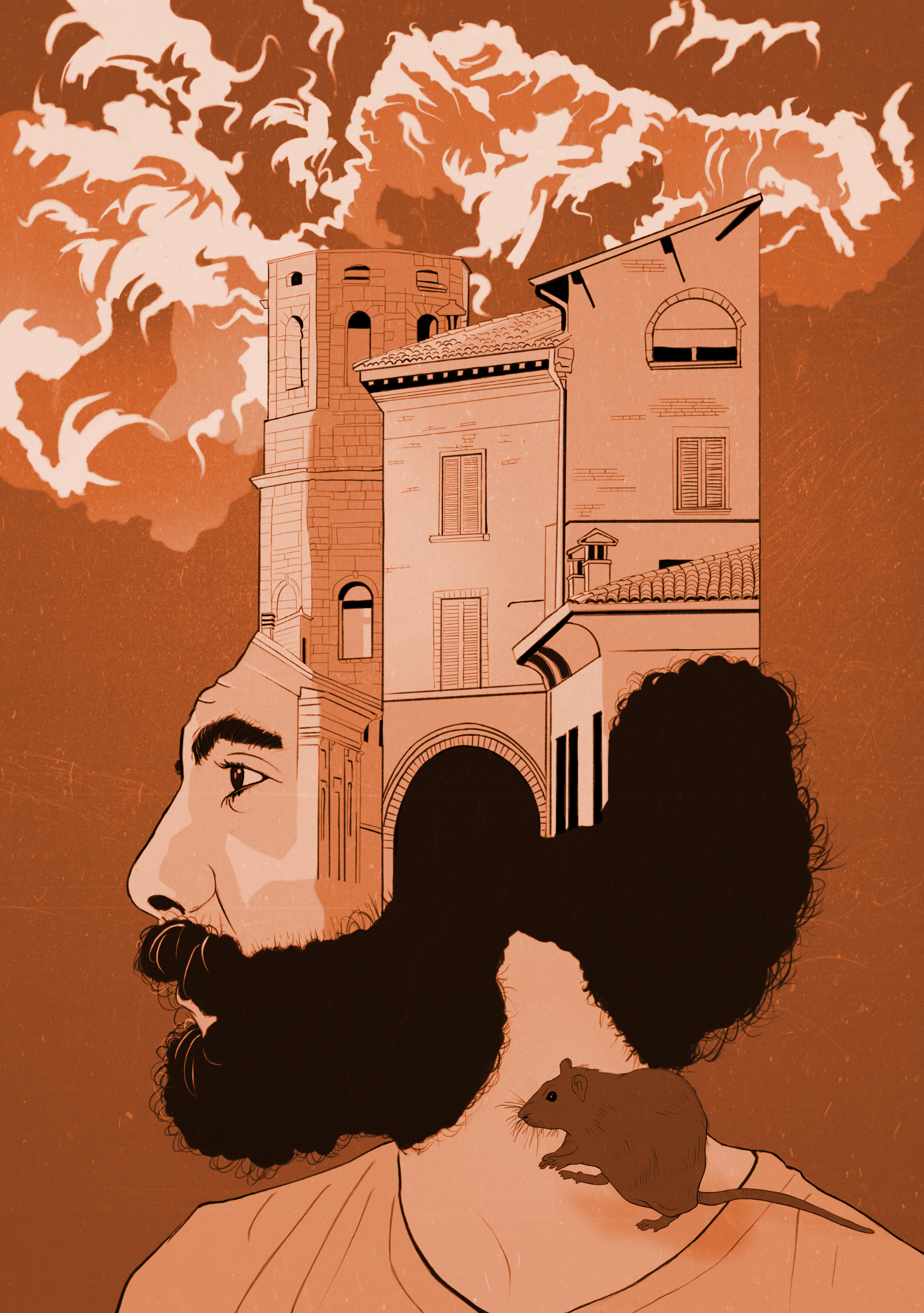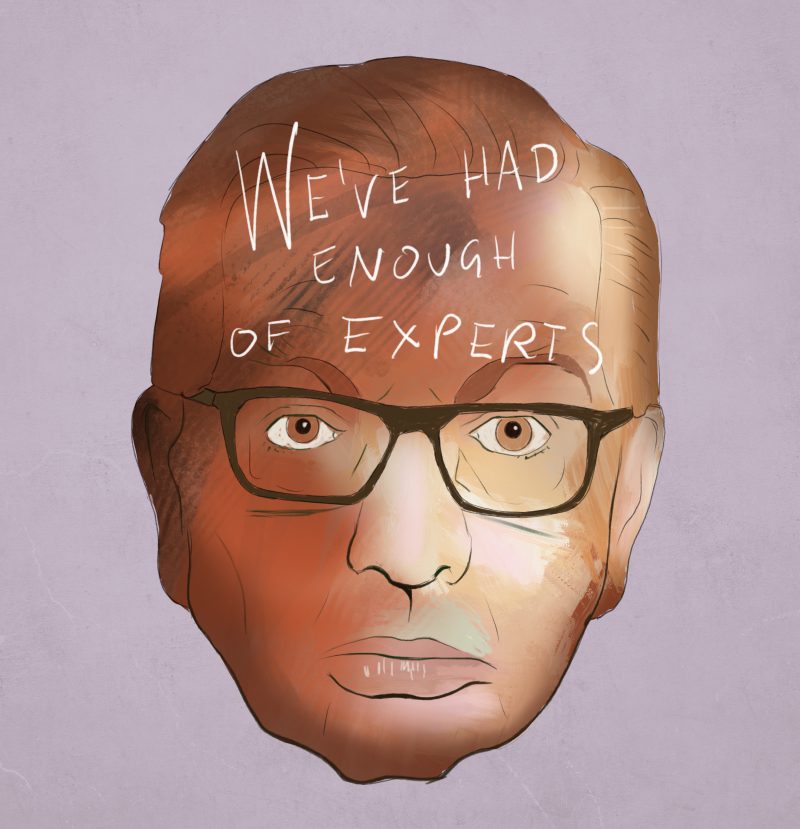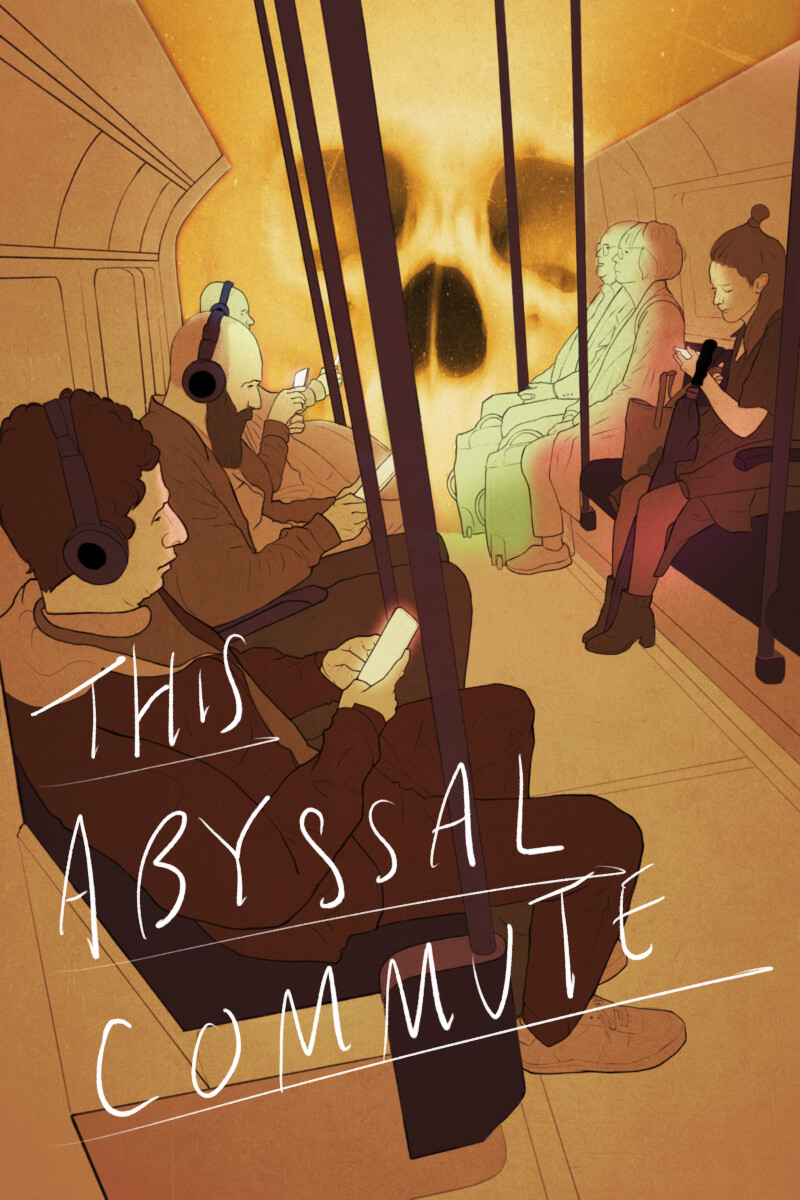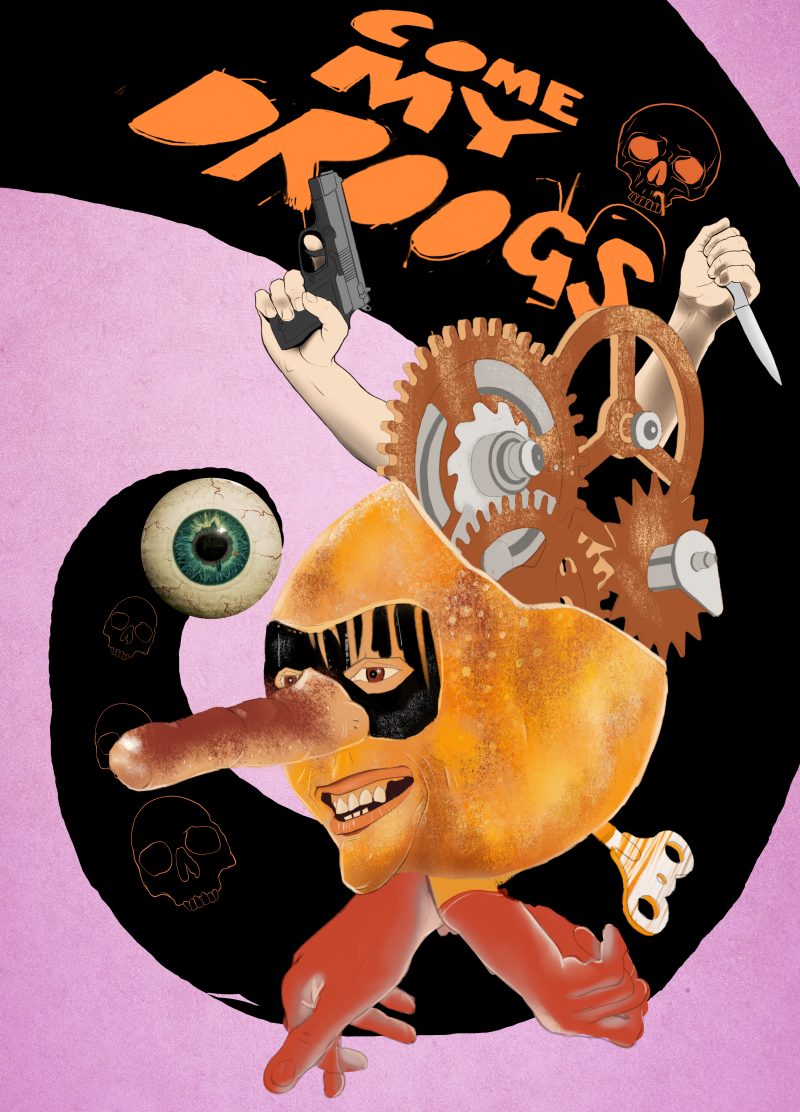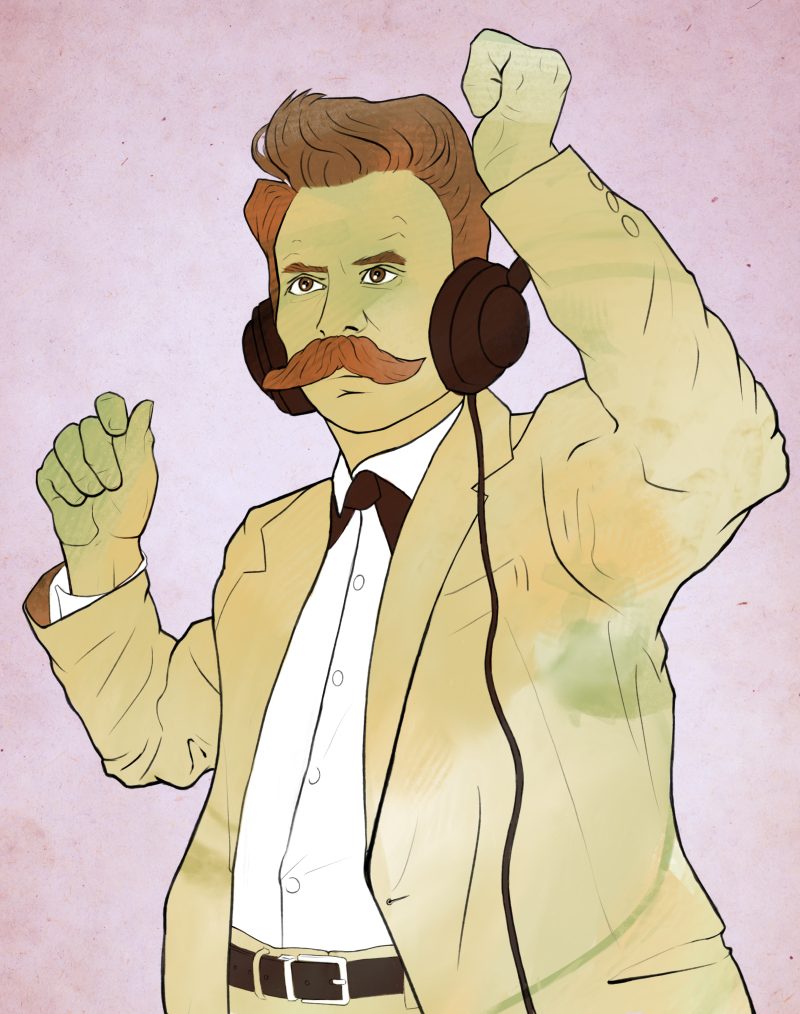“He walked with equipoise, possibly in either city. Schrödinger’s pedestrian.”
The City & The City, China Miéville’s take on the ‘murder mystery’ is, on the surface, his most accessible book… but don’t be fooled, it’s a murder mystery with the kind of twist that’ll cast your mind into an unknown place, a mis en abyme located somewhere between the world and the word.
Such is the power of an idea… and an idea.
The best modern speculative fiction creates a tension between an idea and its unpacking, it opens a space for reflection. It may often breach the constraints of genre and Miéville is frequently guilty of this, but his brand of modernity lends itself not just to ‘genre-hopping’ within the framework of the written word, but outside the idea of the novel altogether.
Inside a Miéville there’s never just one thing going on. You might encounter sci-fi, fantasy, philosophy, semiotics, an absurdity that flirts with surrealism… It’s a creative labyrinth reminiscent of a piece of conceptual art, presented not with a view to exegesis, but as a place-holder for the overlaying of your own creative hermeneutics. And yet The City & The City is accessible… not just because of the relatively straightforward murder mystery element, but because the idea that carries the work, however absurd, derives from a concept which is entirely grounded.
Borders
National, cultural, linguistic, psychological… borders bind our insides and divide our outsides. We all understand borders…
The City & The City takes place in the fictional eastern European cities of Besźel and Ul Qoma. The cities occupy the same geographical space but are understood by the citizens to be different. The separation is enforced by law, and a good citizen will unsee, (erase from mind) any moment of ‘crossing,’ or risk stoking the ire of a hidden force known as Breach. Breach polices the join between the two cities and comes down heavily on anyone observed to be crossing over. To be found ‘breaching’ is to be guilty of a crime worse than murder.
The death of an outsider who may have been investigating the existence of a third city, Orciny, located in some interstice between Besźel and Ul Qoma is our point of entry to the story as we join Inspector Tyador Borlú, of the Extreme Crime Squad in his investigations…
Allegory vs metaphor
There are many possible allegorical ‘border readings’… Palestine, Apartheid, the Berlin Wall, ‘Fortress Europe’, even the ghetto areas which invite us to be tourists in our own city…
Drill beyond these readings and there are a further set of metaphorical alignments — national, historical, cultural — but even these start to unravel as we delve…
This is the beauty of a Miéville. While I’ll enjoy the scenery – plot, characterisation, imagery – what really grabs my attention is the idea…
“With metaphorical fiction, I think it’s more interesting because they’re always more unstable. You can’t settle on one closed meaning. And that doesn’t mean there aren’t any meanings, there’s loads of meanings and the meanings beget other meanings and fractal other meanings.”
—Miéville
There’s a degree of perspectivism on display, experimental thinking on a door marked ‘unknown’… Miéville leaves it all open. He leads us down a rabbit hole, but quietly, not demanding that we follow the whole distance. The reader is free to interpret according to the moment, to see what there is to see even if that means not seeing…
Unseeing
The idea of ‘unseeing’ is central to the whole experience of the book, a perfect echo of our own suspension of disbelief as we enter strange yet familiar territory. It also reflects our experience outside the book…
We ‘unsee’ daily.
Driven by belief systems, obvious and obscure, personal prejudices and various coping mechanisms, we apply ‘unseeing’ to a reality we often don’t understand and cannot control. We necessarily cut swathes of ‘reality’ from our collective fields of vision, and willingly embrace a comfort zone of piebalding ignorance…
This is not to judge, and nor does Miéville.
Instead, he accommodates such an interpretation, but it’s the easy metaphor, the less obvious one, that ‘finishes’ the book by marking it as ‘understood’. This is to misread a writer like Miéville, to ‘unsee’ his work in the service of easy answers.
Another form of unseeing critiques interpretation, and doesn’t ‘unsee’ in the name of ignorance, but in the name of truth.
“Why does man not see things? He is himself standing in the way: he conceals things.”
-Nietzsche
Miéville investigates the interstice, the conjunction, the gap, the moment between, the space between the sign and its referent, the area between the seen and unseen.
Consider this, from a character in an earlier work:
“The point where one thing becomes another. It is what makes you, the city, the world, what they are. And it is the theme I’m interested in.The zone where the disparate become part of the whole. The hybrid zone.”
– Mr Motley, Perdido Street Station
The mystery in plain sight
In order to enter the fantasy novel we have to suspend disbelief but when the work also invokes ‘crime thriller’ we’re privy to a fantasy that investigates itself.
The seeing/unseeing trope becomes the means whereby we navigate the streets, follow the plot line, while also becoming increasingly aware that our reading works as much to conceal as to reveal.
“The two cities need the Breach. And without the cities’ integrities, what is Breach?”
Breach has a double meaning: as noun it presents the law, as verb it suggests transgression.
Miéville creates tension by this ‘doubling’ strategy and we find ourselves in the groove between two genres, two cities, two nationalisms, disbelief and its suspension. Truth and lie spiral into a ‘breach’… a crack in understanding suggestive of paradox.
Miéville writes with the experience of postmodernity but does not descend into an infinity of unresolvable openings (which we now know amounts to closure) but instead evokes the tension of a living, breathing paradox that exists inside the reading.
“Orciny was where the Illuminati lived. That sort of thing.”
Orciny, the mythical third city, is the foil that shows us the magic glue in our thinking. Miéville uses this lie to illuminate the space that can’t be seen, the aporetic space of the breach.
That the idea of Orciny reads more like a plot strategy than an actual place will for some, undermine the nature of the fantasy, but this is the point. Rather than escape into some fantastical realm we’re forced to retain the tension, the doubling process, and remain enmeshed within undecidability.
This performative throws our seeing into question. It serves not to inspire sympathy or empathy for any of the characters, but instead creates a breach within the awakened sense of ‘otherness’ in ourselves, a breach that remains open.
“Most vermin are interstitial,” says Borlú, with reference to rats, pigeons and the other creatures that occupy both cities. In joining Breach, he becomes the vermin-like transgressor. In refusing the ‘closure’ of Orciny, his eyes remain open to his unseeing. In a post-truth age of magical thinking, embroidered with its fake news and conspiracy theories, this sounds like a strategy worth considering.
The City & The City was recently turned into a TV mini-series. The predictable mixed results echo most attempts at filming the unfilmable. It’s worth a look but read the book first, this is, after all, a journey into language and its gaps…
